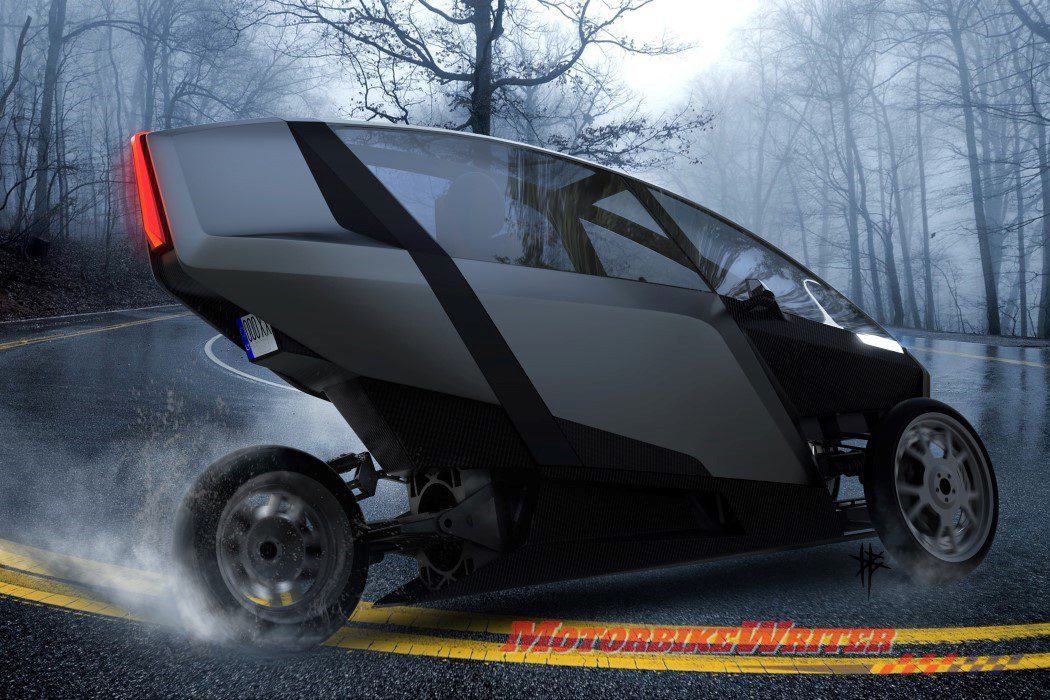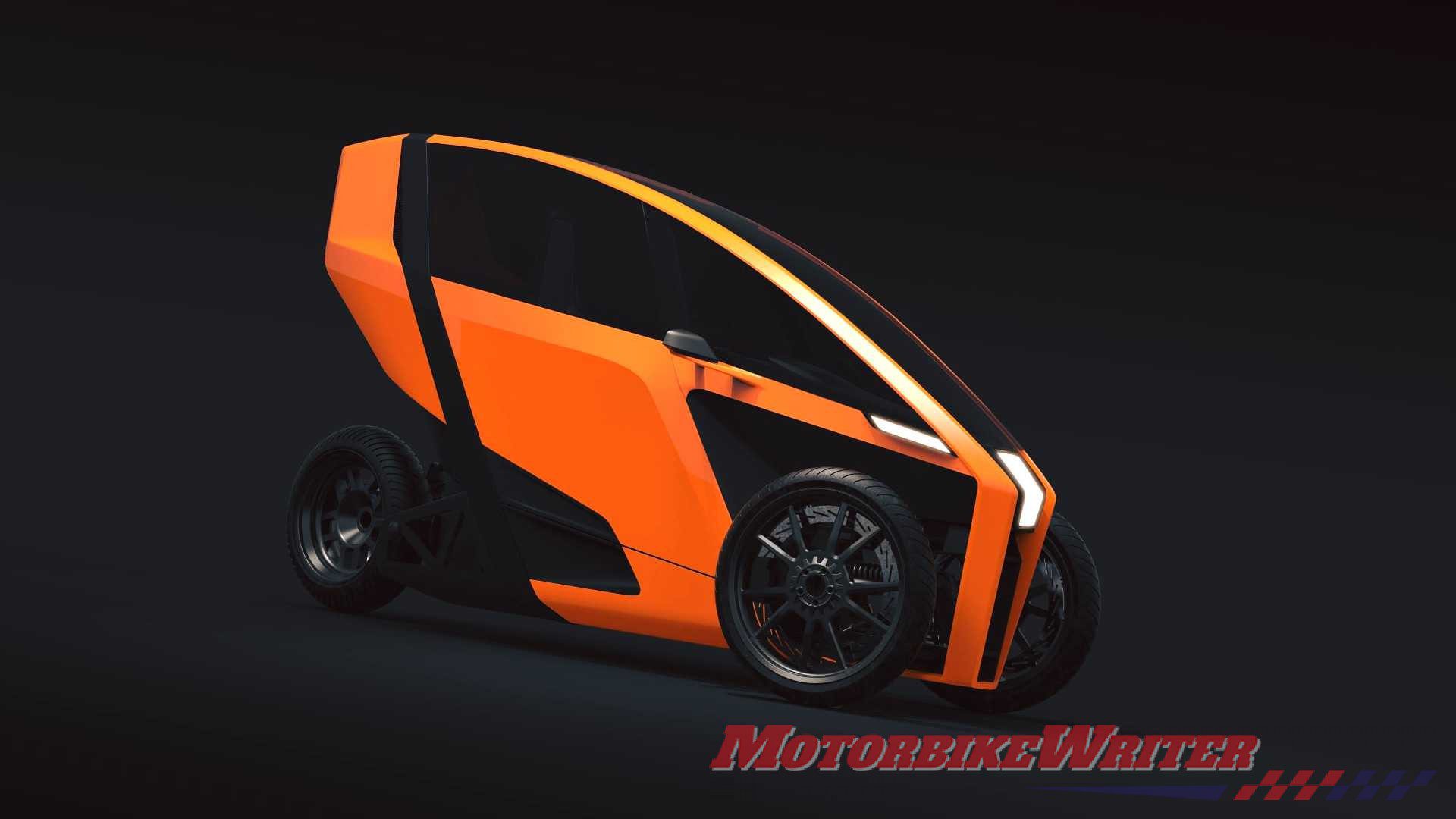Lithuanian start-up AKO is now testing its electric-powered tilting trike prototype which is somewhere between a motorcycle, trike, car and plane.
Like the Piaggio and Yamaha leaning scooters, the Yamaha Niken leaning motorcycle and the non-leaning Can-Am Spyder roadster, it has two wheels up front and a single wheel at the back.
But the most interesting departure is the steering system which is somewhere between an aircraft yoke, car steering wheel and motorcycle handlebars.
Riders turn the bars/wheel the same as a motorcycle to steer, but can also move the steering column side to side to tilt the machine up to 30°.
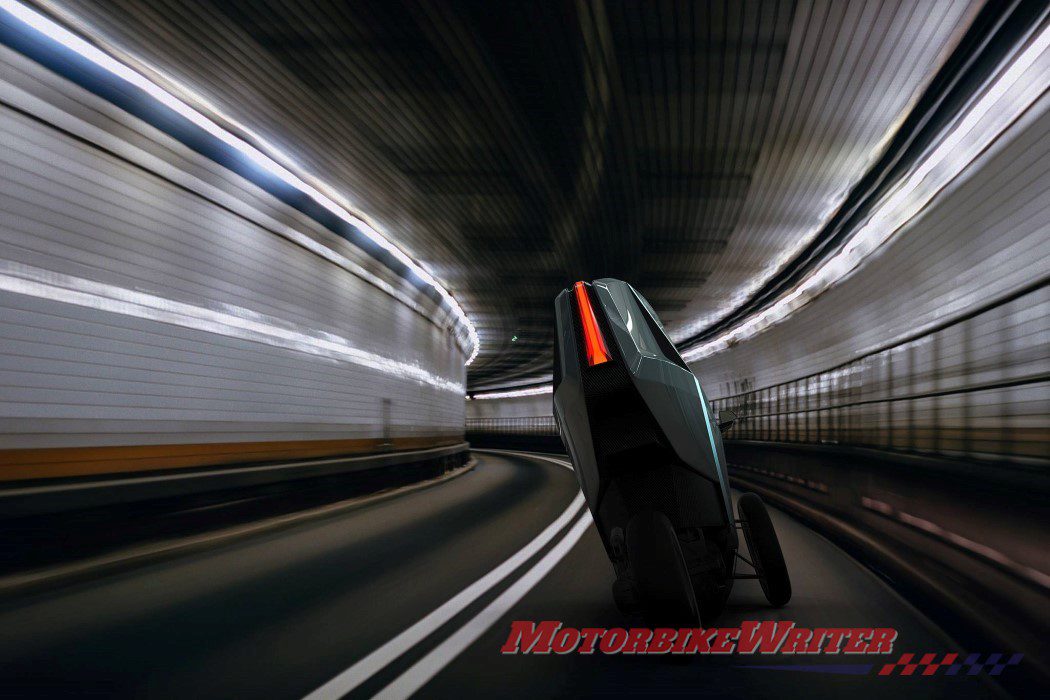
The hefty 500kg AKO is powered by a 26kWh battery and electric motor driving a shaft to the single rear wheel.
Output is 200kW with 600Nm of torque.
Range is claimed to be more than 300km with a top speed limited to 240km/h.
That compares with the Harley-Davidson LiveWire with 150km of highway range and 235km of city range. It will arrive in Australia later this year costing probably more than $40,000.
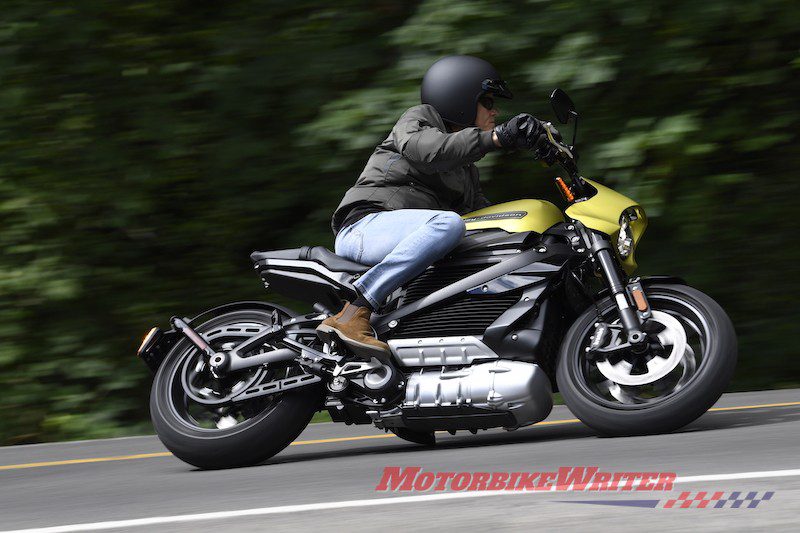
AKO applied for the patent in July 2019 and is now in the prototype testing phase so production is be a long way off yet.
The company is now asking for manufacturers interested in production to contact them via their website: akotrike.com.
Tilting into the future
Several other companies are also working on tilting three wheelers.
Yamaha is particularly keen on a leaning trike future and has applied for several patents.
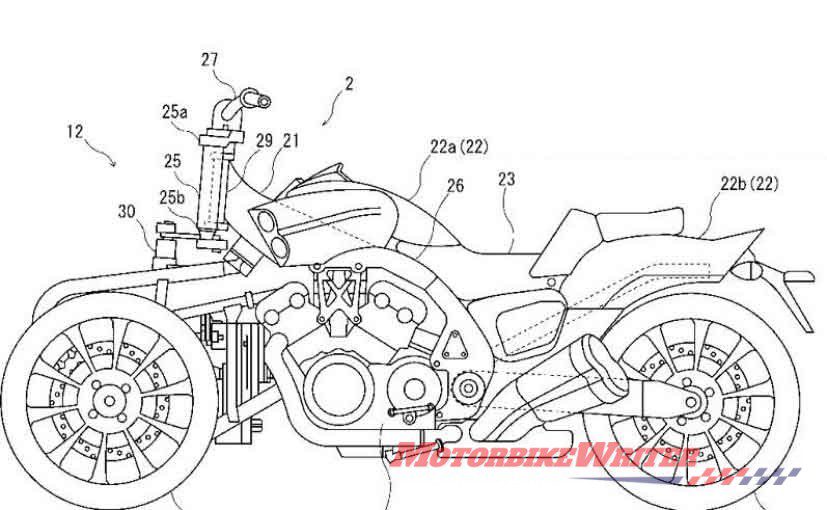
Honda was the only one that has applied for a leaning trike patent with an electric motor until the AKO.
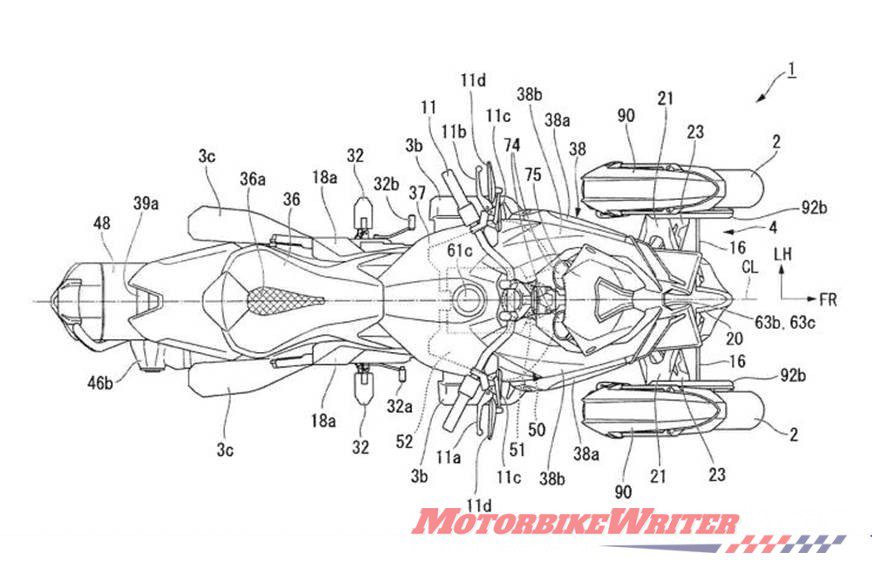
And late last year, Kawasaki applied for a patent for a tilting trike.
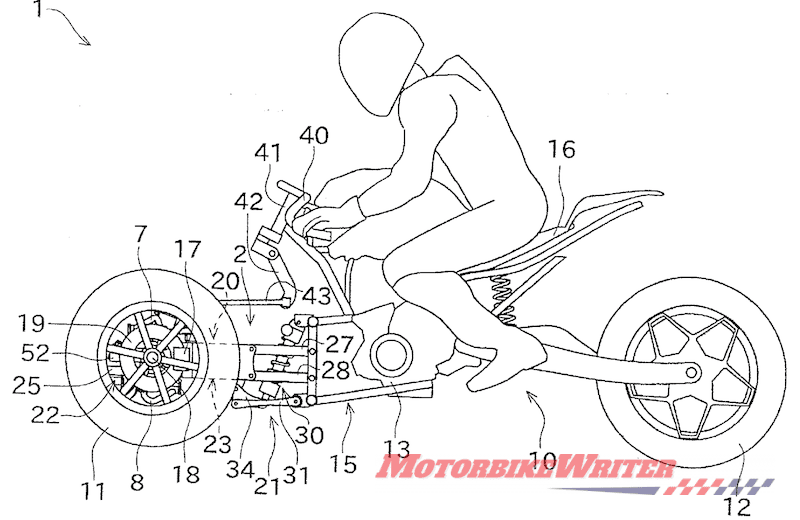
We can see the advantages of a tilting three-wheeler:
- More front contact patch means great cornering confidence;
- Better braking performance from the extra contact patch;
- Safer and therefore attractive to more people; and
- No need for a side stand or to put your foot down when stopped.
There are also disadvantages compared with a traditional two-wheeled motorcycle or scooter:
- Costlier and more complex suspension;
- Less lean angle;
- Wider footprint and less ability to lane filter;
- Heavier and therefore higher fuel/power consumption; and
- Greater tyre replacement costs.


